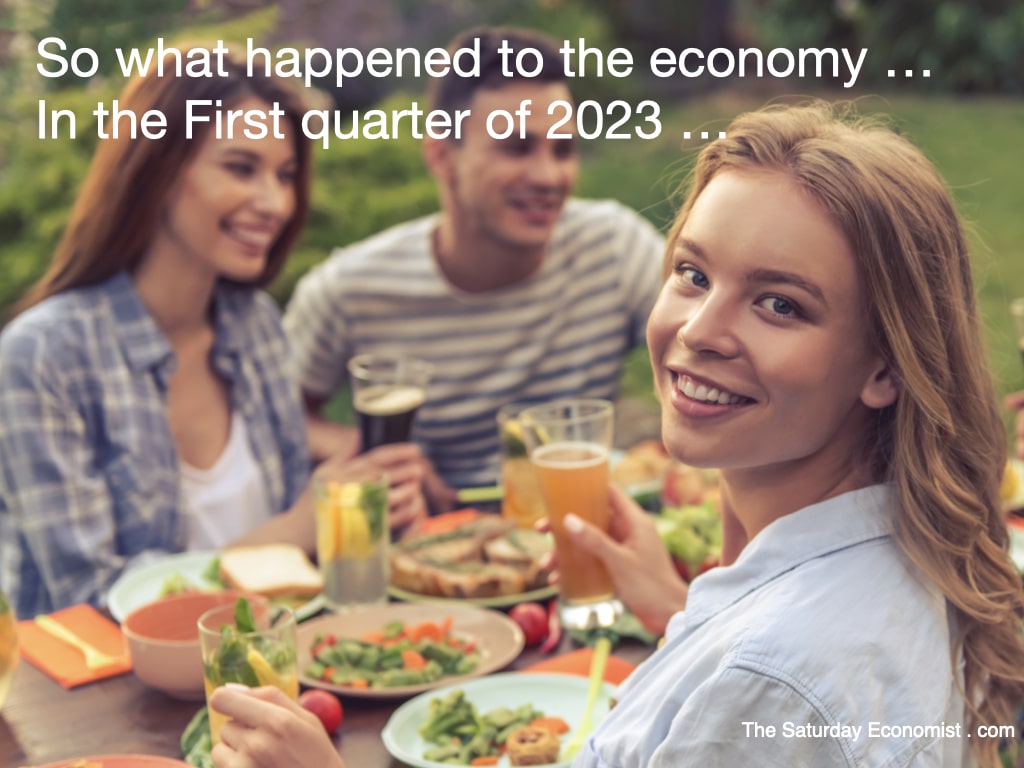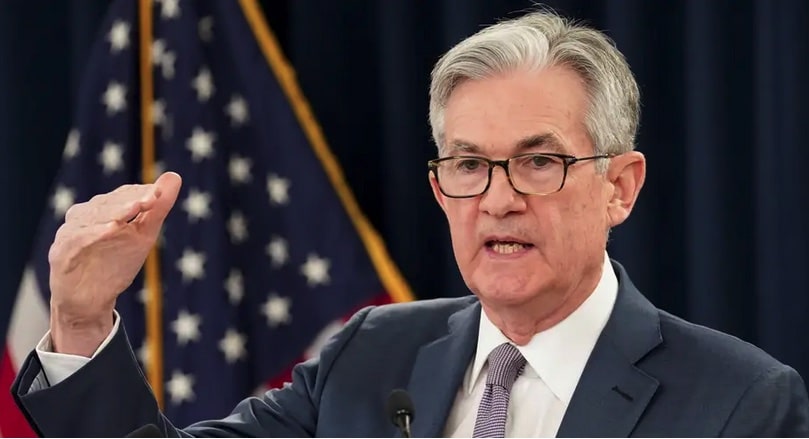|
Growth ...
The economy appears to have expanded by 0.5% year on year, with strong growth in construction (4.5%) and services (0.7%). This suggests a positive performance overall, offset by a 2% fall in manufacturing. Part of the drop in manufacturing, reflects a return to trend rate, following a period of over expansion, peaking in the second quarter of 2021. We expect a stronger performance in the rest of the year. Within the service sector, strongest areas of growth were in Administration (5.9%), Accommodation and Food, (3.8%) and Professional and Financial Services (3.8%). So what of the year as a whole? In our presentations, we forecast growth of 0.4% this year. At present there appears to be no reason to adjust the forecast. The Bank of England now expects the U.K. to avoid recession in 2023, projecting growth of 0.0% this year. The latest NIESR forecasts in the Spring update are forecasting growth of 0.3% in the current year. Growth in 2024 is expected to be around 1%. The Bank of England slightly more pessimistic than the conservative NIESR numbers. We always considered the Bank and the OBR to be too gloomy. An aspect compounded by the gloomy over view from the IMF in Washington. We model in growth of 1.5% in 2024 and 2.0% in 2025. We expose our optimism bias perhaps. Inflation In the first quarter of the year, inflation CPI basis averaged 10.2%. Producer output prices averaged 11%. Producer output prices averaged 13.4%. Both producer indices had fallen to average 8.5% in March. In the U.S. the trend is in the right direction. Consumer price inflation was down to 4.9% in April. Producer output prices were down to 2.3%.. Energy prices have fallen. Gas prices have collapsed. Oil prices Brent Crude averaged $82 in the first quarter compared to $100 dollars in the same period in 2022. Food price inflation is expected to fall significantly from April onwards. The overall rate of inflation (CPI basis) is expected to fall to around 5% by the end of the year. The 2% target for headline inflation may remain elusive into 2025. Employment and Earnings Unemployment was 1.3 million in the first quarter. The unemployment rate was 3.8%. The number of vacancies averaged 1.1 million, the challenge of recruitment persists into the New Year. We expect inflation to drift slightly higher to 1.45 million by the end of the year. The u-rate rising to 4.1%. Earnings in the first quarter averaged 5.8%. We expect this to peak in April, drifting slightly lower to around 5.2% by the end of Q4. The underlying rate of wage inflation will underpin the forward outlook for prices despite the hopes of the Bank of England. Total employment in the first quarter increased to just under 33 million. This was slightly ahead of the pre covid level at the beginning of 2020. The number of people self employed increased. The number of UK citizens in work fell. The number of foreign workers increased. Workers from outside the EU hit a new record of 4.2 million. The number of workers from within the EU area increased to 2.5 million, almost back to the pre covid peak in the first quarter of 2020. Interest Rates UK Base rates were increased in the first quarter, to average 3.85%, rising to 4.25% in April and 4.5% in May. Ten year gilt rate average 3.54% in the quarter rising to 3.65% in April and trading at 3.77% over the weekend. We may have seen the peak for interest rates in this cycle as the Bank adopts a wait and see approach. A further 25 basis point rise may yet be a possibility in the U.S. and the U.K. This is not our central forecast scenario. We expect base rates to remain higher for longer than markets currently expect. We still expect US ten year bond yields to average 4.00% in the final quarter of 2023. U.K. rates will rally to average 4.00%. The hard yards now gained in life after Planet ZIRP. There will be no return to the forbidden planet. In the UK, prior to the Great Financial Crash [2000 - 2008] the average inflation rate was 2.0%, the average UK bank rate was 4.50%. Ten year bond yields averaged 4.50%. Want to know more Stay up to date with our Friday Forward Guidance Features on Rates and our Monday Morning Markets updates on equities, bond yields, exchange rates, and commodity prices. Available on The Saturday Economist web site. To understand the markets, you have to understand the economics … and we do. Notes on Data Presentation At the Saturday Economist we use the year on year comparison to present the rate of change on principal indices. Data from ONS GDP monthly estimate, UK March 2023 16th May 2023 ONS Employment by country of birth 16th May 2023
0 Comments
Later this week, we will be updating our analysis "So just what happened in the first quarter of the year". The economy appears to have expanded by 0.5% year on year, with strong growth in construction (4.5%) and services (0.7%). A positive performance overall offset by a 2% fall in manufacturing. Part of this drop reflects a return to trend. In our presentations, we forecast growth of 0.4% this year. At present there appears to be no reason to adjust the forecast. The Bank of England now expects the U.K. to avoid recession in 2023. We always considered the Bank and the OBR to be too gloomy.
Dimensions of Strategy ... our Series on Artificial Intelligence Artificial Intelligence (AI) is the rapidly growing field transforming the way we live and work. From self-driving cars to smart home devices, AI is becoming an increasingly integral part of our daily lives. As the technology continues to evolve, it is essential to understand the potential benefits and challenges of AI, as well as its impact on society and the economy. In this series of articles, we will explore the world of AI, from its history and development to its current applications and future potential. We will examine the ethical and societal implications of AI, including issues of bias, privacy, and job displacement. We will also look at the ways in which businesses and industries are using AI to improve efficiency, productivity, and customer experience. The great thing about AI is we are able to write the series using AI. We experiment with ChatGBT, ChatBot and Aiyla to develop the outline and content. Whether you are a business owner, a technology enthusiast, or simply curious about the world of AI, this series of articles will provide you with valuable insights and perspectives on one of the most exciting and transformative technologies of our time. The Series is available here ... Dimensions of Strategy - Artificial Intelligence The Fed hiked rates by 25 basis point this week. The ECB followed suit. The Bank of England is expected to join the 25 basis point club next week.
The target range for the Fed Funds rate is 5.00% to 5.25%. UK base rates will hit 4.5%, possibly 4.75%. In Europe the interest rates on the marginal lending facility are at 4.00%. Christine Lagarde has suggested, although the rate of increase has slowed, there a more increases to follow. In the UK markets would like to believe 4.5% will be the peak for this stage in the cycle. With more to come in Europe, 4.5% (MLF) may well also be the case in Europe. In the USA, the doves believe we have seen the top of the curve. It seems unlikely there will be further rises in Fed rates for the moment. Jerome Powell is ruling out any cuts to base rates in the current year. The markets are not convinced. Ten year bond yields trade at 3.4% this morning. UK ten year gilts trade at 3.75%. Manna from heaven. Markets require a softening of yields to restore value to the bond market. “When the Fed hits the brakes, someone goes through the windscreen.” When the Fed hits the brakes, someone goes through the windscreen, It was almost the Fed itself. A cluster of regional banks have “hit the hood” including Signature, Silicon Valley Bank and First Republic. Combined assets of $550 billion are splattered over the windscreen. JP Morgan has mopped up some of the blood with a hefty clean up fee. Jamie Dimon is convinced ”We are past the worst”. Traders continue to torment Pac West and Western Alliance. Pac West is weighing its options. Shares fell despite assertions by the Federal Reserve, the recent bank crisis is contained. First Republic collapsed despite a $30 billion lifeline from fellow bankers. $100 billion of deposits were withdrawn in one day. The Fed maintain the US banking system is sound and resilient. Yet banks “faced with unrealized losses face significant safety and soundness risks”. The fear is the deficit exposure will spread from bonds to the commercial property sector. At the Fed briefing on the 14th February, one page was devoted to Silicon Valley Bank. At the Fed briefing on the 14th February, one page was devoted to Silicon Valley Bank. There was nothing about the risk of a bank run. The situation was not presented as urgent or alarming. Less than four weeks late SVB collapsed. The Fed’s own Barr review pointed the finger inside the regulator. There was a clear need to “address rules of engagement and supervisory conditions”. At the end of 2021, no one including the Fed expected rates to rise in 2022. Regulators were testing the implications of a further fall in rates and interest spreads. Stress tests for life after Planet ZIRP and a rapid rise in base rates were off the agenda. By the beginning of 2023, the staff report stated, “SVB has significant interest rates risk, the risk measurement process has failed within the bank.” Maybe they should have been following the Saturday Economist! Much more on this to follow ... That's all for now. Have a Great Bank Holiday weekend, Links The Silicon Valley Bank Case Study Friday Forward Guidance |
The Saturday EconomistAuthorJohn Ashcroft publishes the Saturday Economist. Join the mailing list for updates on the UK and World Economy. Archives
July 2024
Categories
All
|
| The Saturday Economist |
The material is based upon information which we consider to be reliable but we do not represent that it is accurate or complete and it should not be relied upon as such. We accept no liability for errors, or omissions of opinion or fact. In particular, no reliance should be placed on the comments on trends in financial markets. The presentation should not be construed as the giving of investment advice.
|
The Saturday Economist, weekly updates on the UK economy.
Sign Up Now! Stay Up To Date! | Privacy Policy | Terms and Conditions | |



 RSS Feed
RSS Feed